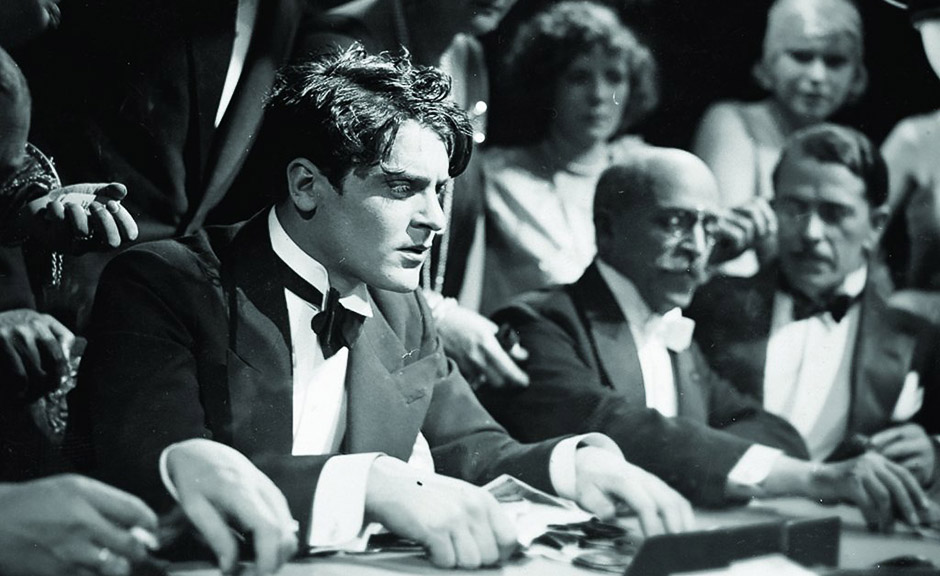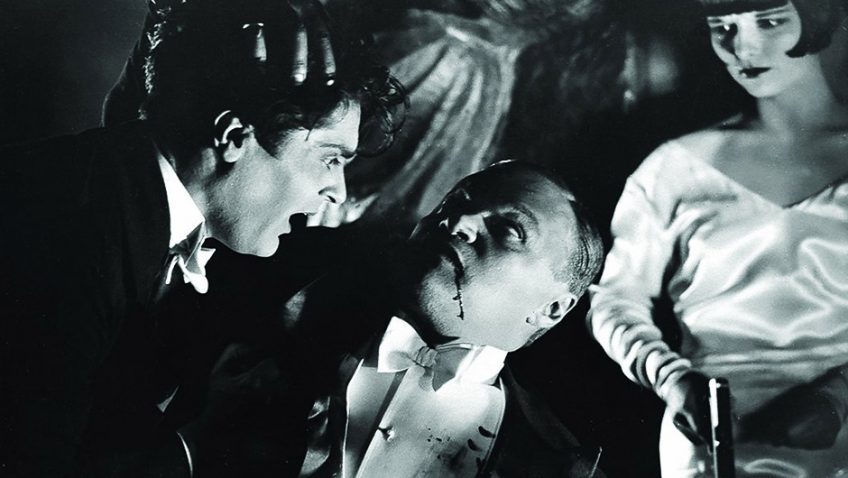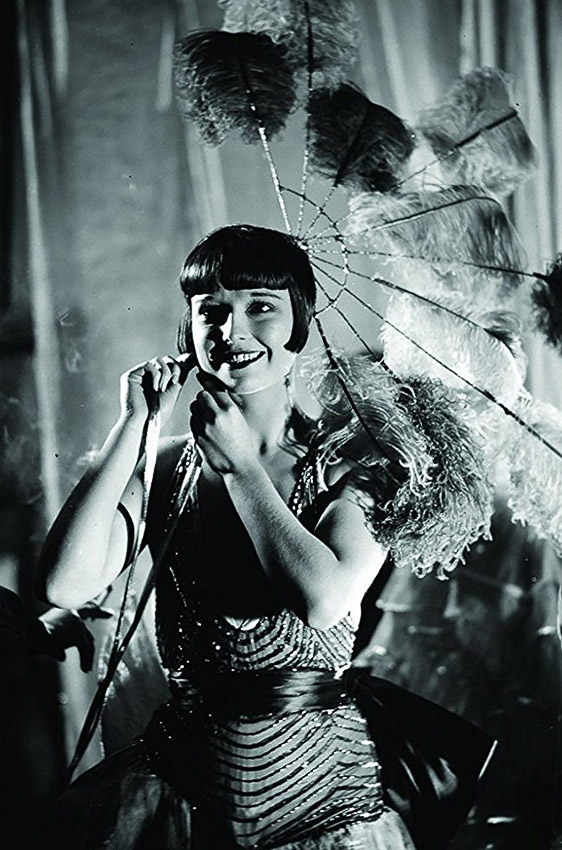Joyce Glasser reviews Pandora’s Box (June 1 2018), Cert. PG, 135 min.
On limited release: Playing until 14 June at the BFI Southbank, Filmhouse Edinburgh, QFT Belfast and selected cinemas UK-wide until 14 June.
Watching Georg Wilhelm Pabst’s riveting, silent film Pandora’s Box, now released by the BFI with a miraculous digital restoration, you can’t help but think about how ‘talkies’ have, in one respect, limited filmmakers and actors alike. With his all American accent (preferable to English with a phony German accent), who believed that Tom Cruise was really Claus von Stauffenberg, the German soldier and aristocrat who plotted to kill Hitler? But from the first instant you see Lulu (Louise Brooks) entertaining Schigolch (Carl Goetz), a cunning, freeloading, old pimp in the art-deco apartment of her current lover, your mind plays tricks on you. When widower and publisher Dr Peter Schӧn (Fritz Kortner) returns home to end their affair for the sake of his reputation, you hear the conversation in German when there is nothing but the occasional caption. It is impossible to believe 23-year-old Brooks is not Lulu, a showgirl in the waning Weimar Republic.
Louise Brooks was, however, born in Cherryvale, Kansas to a lawyer father and musically inclined mother. But there are more similarities between this all-American ‘it girl’ and her great German character, Lulu, than meet the eye. And when Brooks ran off to Europe to make films with Austrian director G.W. Pabst, he must have known it.
Neither parent had time for Louise and when she left home to become a dancer at age 16, she was hardly clicking her heels to get back to Kansas. There, when she was just 9, she was raped by a neighbour, a traumatic event that, she later claimed, contributed to forming her attitude toward sexual pleasure. Brooks’ portrayal of Lulu’s masochistic relationship with the profiteering Schigolch is painful to watch.
In 1925 the Head of Paramount Film Studios, Walter Wanger, noticed a charismatic, spirited showgirl in the Ziegfeld Follies and put her under contract. Just before Brooks fled the studio system that she despised to make Pandora’s Box in Europe, she was making Hollywood movies; having affairs with Charlie Chaplin and Walter Wanger; setting trends in Hollywood with her flapper, bob hair style; and enjoying the hospitality of real-life publisher William Randolph Hearst at his notorious castle, San Simeon. In the film Lulu is supported by Countess Anna Geschwitz (Alice Roberts), perhaps the first portrayal of a lesbian in cinema. In real life, Louise had dalliances with other women (including Greta Garbo); although she claimed she was not a lesbian or bisexual. Brooks was Lulu before she read the script.
If the downward spiral to the plot is predictable, nothing else is. Non-judgmental and generous, Lulu mixes a little girl’s impertinence with a vulnerability transposed into control by rage, manipulation, sexuality – and that innocent, welcoming smile. A femme fatale long before Film Noir, Lulu comes on to Peter’s naïve, smitten son Alwa (Francis Lederer), when his father breaks up with Lulu to marry a respectable girl for the sake of his reputation. Peter warns his son to stay away from Lulu, but in vain.
While still engaged, Peter invests in a new show giving Lulu a starring role, and all of Berlin is present at the premiere. When Lulu sees Peter with his fiancée, she refuses to go on stage as long as the young woman is present. Forced to persuade her to perform, Peter is left alone with Lulu who seduces him behind stage. With no alternative but to marry Lulu, Peter deludes himself that they can lead a normal bourgeois life. He learns the hard way that Lulu is not destined for normalcy. And Lulu’s past comes back to haunt her when she goes on the run with Alwa in tow.
Many thought that Pabst himself had been seduced by Brooks and that he intentionally ignored the resentment that the German cast, still reeling from the burden of the war reparations, felt at being upstaged by an American. But the excitement of being a kind of Sally Bowles in a lively, cosmopolitan foreign city fed into her performance and Pabst must have sensed that too. They made one more film together (Diary of a Lost Girl) the following year (1929). Oddly, Pandora’s Box was not a hit and it was only in the late 1950s, when Henri Langlois of the Cinémathèque Françoise championed the film that its reputation and Brooks’ grew.
After one final film in Germany in 1930, Brooks’ career faded until she resurfaced as a writer. Pabst continued to direct (with sound) in Germany, and, briefly in Hollywood, when Hitler came to power. His time in Hollywood and then Paris was not fruitful and he returned to Germany in 1939, never reaching the heights of Pandora’s Box, or his other great films, including Westfront 1918 or The Threepenny Opera.

At 135 minutes, Pandora’s Box is a long saga and the final quarter the story loses its momentum. Based on the plays by Frank Wedekind and on a script by Hungarian screenwriter Ladislaus Vajda (father of the director Ladislao Vajda) the ending is unsatisfying and the introduction of Jack the Ripper as late as the 1920s is curious. But then again, England, where Lulu is living incognito and in squalor, takes a small beating in the film.
It is obvious why the BFI is putting Pandora’s Box on an extended run as part of its Big Screen Classic series, this one looking at cinema’s ‘It Girls.’ The miracle is not only that you will be seeing such an impressive print, but that you are seeing the film at all. No original negative for the film exists. Since its original release prints were cut and/or edited for censorship and, since it was not an instant success, storage was not a priority. Pieces of the film emerged from time to time in different countries. Three different duplicate prints were used for the present digital restoration which was sponsored by the late Hugh Hefner. The print you will be seeing is scored by the late Peer Raben, a German director who went on to produce Rainer Werner Fassbinder’s first films and to compose thirty of them.
You can watch the film trailer here:






